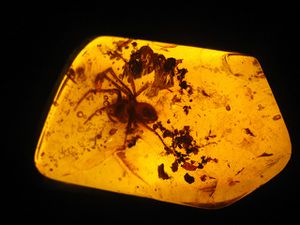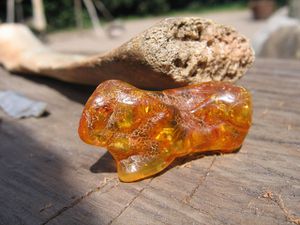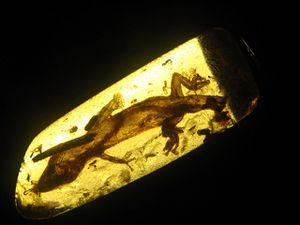Polish Gold
After a visit of the Amber museum of Amber is a mineral of many names : "jantar", good stone, sacred stone, gold of the north, baltic gold and the electron. It is also a mineral of many colours. Depending o the age amber nuggets range from nearly white, through all shades of yellow and orange, to dark, almost cherry-like red. Amber has been an object of admiration and interest for centuries. Its beauty, pleasing smell, and ease of processing have always earned it a palce among decorative stones. The "golden-sun-beads" were first praised by Homer himself. Pliny he Elder, a Roman historian, wrote : "Among luxury goods it is valued so high that an amber human figurine, no matter how small, costs much more thn men in their prime".

So now, after this little introduction about Amber, I go to speak about the amber history. The earliest exhibits testifying to the fact that amber was known and worked in the Gdansk area date back to 8-4 thousand years B.C. The finds indicate it was ascribed magical power. The locals produced amber amulets in the shape of animals, deities, and hero figurines for cult purposes. Gdansk lies on the crossroads of both anciet and contemporary amber routes. Back in history the land trade routes between different European cultures ranalong the major rivers, including the Vistula. All led south towards the black Sea reaching Rome, and Greece. The Vistula amber route linked the Gdansk Coastal area with the Mediterranean countries ans was travelledalong at least as early as in the 5 century B.C. Between ca. 400 B.C. and ca. 30 AD Europe was dominated by the Celts. Amber was always present in their culture.

Gdansk, my new city : The world capital of Amber
Bound with the sea and the Baltic Gold of North, Gdansk has cultivated the tradition of amber craft for ages. The local masters have developed their own amber processing school, and the quality of their works is unrivalled elsewhere. The Baltic amber, or succinite, is actually hardened mineral resin originally formed 40 million years ago. the mineral contains a relatively large admixture of succinic acid, which gives it its exceptional healing properties. Gdansk has always been a major centre of mining and processing this unique mineral famous for magnificent amber works of art. As such, the contemporary Gdansk is a respected centre of the related scientific research. Here are the main offices of the national Amber Chamber of Commerce and the International Association of Ambers Masters.Gdansk hosts the world's largest amber fairs : Amberif and Ambermart. It is a recognised site on both the historic, and the contemporary amber route. The beginnings of first Amber collections in the city date back to the second half of the century ef the 17th century with inclusions in the centre of interest. To recognise Gdansk's acclaim for amber and the mastery of its artists one of the stone varieties was called gedanit after the city name.


